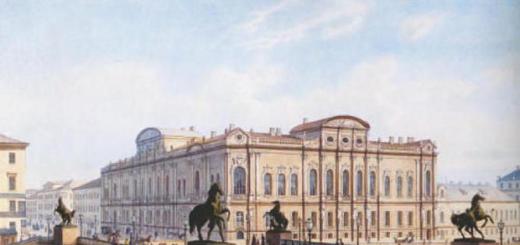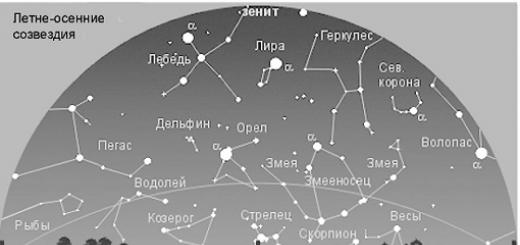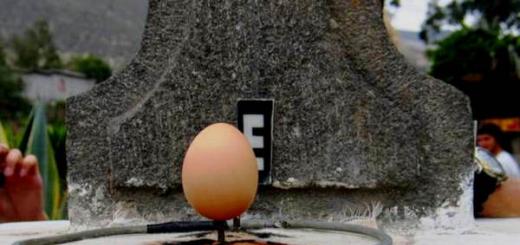At the beginning of the 18th century, the Moika River was a stagnant river flowing from a swamp, on the site of which the Field of Mars is now located.
In 1711, the Moika River (the old name was Mya) was connected to the Fontanka (the old name was Nameless Erik). The name "Moika" comes from the ancient word - Mya (small river). In 1710, on the left bank of the Neva, the “Big Perspective Road” (now Nevsky Prospekt) was laid, and at the intersection of the road with the river, the natural border of St. Petersburg was formed. A wooden bridge was built on this site and at the beginning of the century travel taxes were collected here, for this, Mytny Dvor was built next to the bridge near Gostiny Dvor.
In the middle of the 18th century, the first wooden embankments of the Moika River were built and the bottom of the river was deepened. At the beginning of the 19th century, the embankments from the Fontanka to Angliysky Prospekt and the Kryukov Canal were dressed in granite. In 1960, a granite embankment was built near the Mikhailovsky Garden, in 1975 - an embankment from Maklin Avenue to the Pryazhka River.
Panorama of the Moika River
The banks of the Moika River at the beginning of the journey are very beautiful: on the right bank - the Summer Garden, on the left - the Mikhailovsky Castle and the Mikhailovsky Garden. In the place where the Moika connects with the Griboyedov Canal, a “three-knee bridge” was built: Malo-Konyushenny - across the Moika, Teatralny - across the Griboedov Canal and one pedestrian, bearing a decorative value.
Further, the Moyka flows along the former court Stable Department, the main facade of which faces the Konyushennaya Square. There are 15 bridges across the river. Many bridges are sights of the city: Narodny, Red, Blue, Kisses, Pochtamsky, Maly Konyushenny, Bolshoy Konyushenny, First Engineering, First Garden, Theatrical, Pevchesky and other bridges. The blue bridge on St. Isaac's Square is the widest in the city, its width is about 100m, immediately behind it is a granite pillar with the image of Neptune's trident. This pillar shows the levels of water rise during major floods in the history of the city.

On the left bank of the Moika River, at the corner of Glinka Street, there was once a tavern "Kiss" in the house of the merchant Potseluev. Not surprisingly, the nearby bridge is named after the Kisses. Behind the Kissing Bridge there is a small island formed by the Moika and the Krushtein and Kryukov canals, called "New Holland". Not far from the mouth of the Moika, the Pryazhka River (the old name of the Chukhonskaya River) flows out of it, earlier spinning workshops were located here.
Along the embankments of the Moika River there are a number of historical buildings: the Stegelman House (architect B.F. Rastrelli), the Stroganov Palace, the Razumovsky Palace, the Yusupov Palace, the Round Market, the Engineering Castle, the Singing Chapel, the building of the General Staff, the Voronin (Lantern) baths. A.S. Pushkin lived and died in house No. 12, since 1925 the All-Russian Museum of A.S. Pushkin has been located here.
Moika River The Moika River flows from the Fontanka to the Neva. The origin of the name has been variously explained. There have been attempts to associate this name with public baths built on the banks of the river. The 18th-century historian Andrei Bogdanov wrote: “This river was named Moika from its former impurity; because she was deaf, she didn’t have a through channel, she was all muddy, and the water was muddy, they didn’t wash any white clothes in it, except what a vile dress. Just to say, her name comes from this folk proverb: “Wash yourself white” (that is, “get dirty”) ... " Indeed, until 1711, when the Moika was connected to the Bezymyanny Erik, the future Fontanka, it flowed out of the swamp, and the name, meaning "dirty", arose even before the founding of St. Petersburg. This is the Izhorian Muya, turned into Mew. The name Mya, in parallel with the usual Moika, is found right up to the beginning of the reign of Paul the First, until 1797. In the 18th century, the Myu-Moika was cleaned, the shores were sheathed with boards, and then dressed in granite. But the name keeps the memory of the fact that it was a dirty, swampy river. However, even now the saying given by the historian Bogdanov is very suitable. To say “wash yourself white” in the Moika will mean the same thing as two and a half centuries ago: get dirty. 15 bridges were thrown across the Moika. 1st Engineering Bridge located on the embankment of the Fontanka River. Initially, since 1828, it was the Summer Bridge, along the Summer Garden. Sometimes the bridge was called New Chugunny. In 1891, the name Inzhenerny appeared, after the Inzhenerny (Mikhailovsky) castle. Since at that time there was another Inzhenerny Bridge - across the Voskresensky Canal, which was filled up in 1869, already from the mid-1890s they received numbers - the 1st and 2nd Inzhenerny Bridges. 1st Sadovy Bridge located in the alignment of Sadovaya Street and the Lebyazhy Canal Embankment. Since 1820, it was called Mikhailovsky after the Mikhailovsky (Engineering) Castle (see. Castle street). On October 6, 1923, it was renamed Sadovy along Sadovaya Street, which, interestingly, was Third July Street at that time. Unofficially, the bridge was called Sadovyi since 1836. Since 1957 it has been the 1st Sadovy Bridge, since in the same year it appeared 2nd Sadovy Bridge, near the western edge of the Champ de Mars. Since 1737, it has been the Red Bridge - this name was officially given on April 20, 1738. In this place, the Red Canal came out to the Moika, which was filled up in 1765. In addition, the bridge itself was painted red. On the city plan of 1798, the bridge is designated as Tsaritsynsky along the Tsaritsynskaya street that overlooked it, which is now part of the Field of Mars. Later, the bridge was dismantled and rebuilt only in 1957, when the modern name was established. Malo-Konyushenny Bridge located in the alignment of the embankment of the Griboyedov Canal. From 1798 to 1828 the bridge was called Tsaritsynsky after the Tsaritsyn meadow, the current Field of Mars. In parallel, from the beginning of the 19th century, the name Sadovy Bridge was named after the nearby Mikhailovsky Garden. In 1829, the name Theater Bridge appeared, which was used until 1873. It was associated with the unpreserved wooden theater, which was located on the Tsaritsyn Meadow. The current name of the bridge was given in 1851. It is interesting that the Theater Bridge did not disappear either, it simply changed its name with the former Maly Konyushenny - across the Ekaterininsky Canal (now the Griboyedov Canal). These two bridges form a single three-span structure (one span is blind), so it is not surprising that it was not immediately decided which of them was called. The modern Malo-Konyushenny Bridge is also sometimes referred to as the Small Konyushenny Bridge. Big Konyushenny Bridge connects Konyushenny and Moshkov lanes. On April 20, 1738, he was given the name Konyushenny by the Imperial stable court of Catherine I (see. Konyushennaya Square). In 1790–1792, the name Moshkov Bridge along Moshkov Lane was used, and in 1821, in connection with the appearance of the Maly Konyushenny Bridge (still across the Ekaterininsky Canal), this bridge began to be called the Bolshoy Konyushenny, although until the 1880s the old name was also used - Horse Bridge. Name Pevchesky bridge near the Palace Square was given in 1844 according to the court singing corps located opposite it - the Chapel. The building was built in 1777 by Yuri Felten and rebuilt in 1810 according to the design of Luigi Rusca; subsequently expanded several times. Name green bridge along Nevsky Prospekt arose in the 1730s and was associated with the painting of the bridge, and was officially fixed on April 20, 1738. In parallel, in 1768, the name Police Bridge appeared, after the police department located nearby (the modern address is Moika, 59); St. Petersburg police chief Nikolai Ivanovich Chicherin lived in the same house on the corner of Nevsky and Moika (for more details, see fig. Bolshaya Konyushennaya street). Already in 1746, the "Green Bridge near the police" was found in the St. Petersburg Vedomosti. From 1785 to 1801, a mixed name was also used: Police Lift Green Bridge. After 1820, the name Green disappears, and for almost a hundred years the bridge was exclusively Police. In October 1918, the Police Bridge was renamed Narodny to contrast with the previous name. On January 13, 1998, the bridge was returned to its first name - Green, in order to put it on a par with other bridges that retained their "color name" - Red and Blue. red bridge located on Gorokhovaya street. On April 20, 1738, it was given the name White Bridge after the color in which it was planned to be painted. In the "Register of the Admiralty Island to the streets" it was stated: "Against which the ranks in those bridges would be built to paint." However, the name remained only in the resolution. In fact, the bridge became Red. This name has been known since 1778. From the second half of the 18th century, this bridge began to be painted red, and not the one that was originally painted (on the site of the current 1st Garden Bridge). Name blue bridge on St. Isaac's Square has been known since 1728, but was officially assigned on April 20, 1738. It is also given by the color of the bridge. This is the widest bridge in St. Petersburg - its width is 99 meters 80 centimeters. Lantern Bridge was named in 1906 after Lantern Lane, in the alignment of which it is located. It was originally the Pedestrian Lantern Bridge, but the designation "pedestrian" fell out in the 1920s, although it remained a pedestrian bridge until 1973. Post Office Bridge located in the alignment of Prachechny Lane. Its first name is the Chain Pedestrian Bridge. It has been in use since 1829. Subsequently, the names Chain Bridge and Pedestrian Chain Bridge came into use. All these names were explained by the presence of chain ornaments. Another name was associated with the material from which the crossing was made - the Pig-iron pedestrian bridge. In the middle of the 19th century, the name Pracheshny Bridge appeared along the lane, in the alignment of which the bridge is located. In parallel with the Laundry in 1846, the modern name appeared - Post Office, along the nearby Pochtamtsky Lane leading to the Post Office. This name eventually supplanted all others. kissing bridge located in the alignment of Glinka street. By decree of April 20, 1738, he was named Tsvetnoy. This can be explained by the fact that, unlike other “colored” bridges named by the same decree, the color of this bridge was not determined. But the name of the Colored Bridge remained only on paper. The first really existing name - in the form of Potsaluev Most common in the 18th-19th centuries - appeared in 1788 by the name of the merchant of the 3rd guild Nikifor Vasilyevich Potseluev, the owner of the nearby drinking house "Kiss". In 1790, the modern spelling also emerged. An interesting variant was recorded in the "St. Petersburg Vedomosti" in 1797: Kiss the bridge. The name of the bridge is associated with legends that it was customary to kiss here before a long separation. These were farewells to the sailors of the Naval crew stationed in the Kryukov barracks; with prisoners who were sent to the Lithuanian castle, located nearby. Krasnoflotsky bridge located on the embankment of the Kryukov Canal. In "All Petersburg" for 1915, the name Pontoon Bridge was recorded. Then for a long time the bridge had no name. The modern name appeared after the reconstruction of the bridge in 1960. It is connected with the fact that nearby, in the "New Holland", there were units of the Leningrad naval base. This is one of the three bridges on the western side of the Kryukov Canal that have etymologically similar names. The Krasnogvardeisky bridge was thrown across the Griboyedov Canal, and the Krasnoarmeysky bridge across the Fontanka. Khrapovitsky bridge located in the alignment of Pisareva street and the embankment of the Novo-Admiralteisky Canal. A bridge has existed on this site since the 1730s. It received its first name - Yellow - on April 20, 1738: it was supposed to paint the crossing in this color. The name lasted until 1793, although already in 1753 a parallel one appeared - the Galley Bridge, along the Galley Shipyard, located behind the bridge. The galley shipyard was then called the Admiralty Plant. It is noteworthy that from 1785 to 1793 the Galley Bridge was not the only parallel name to the official Yellow. During this period, the bridge had three names. The name Khrapovitsky has also been added. Nearby was the estate of Prince Alexander Vasilyevich Khrapovitsky, whose name was transferred to the bridge, eventually displacing the two previous names. True, on the plan of 1798, the bridge is designated as Sinyavin by the name of the house owner, Vice Admiral S. N. Sinyavin, but later only the name Khrapovitsky Bridge began to be used. Alexander Vasilyevich Khrapovitsky was once a writer. Until Prince Alexander Andreevich Vyazemsky, the Prosecutor General of the Governing Senate, who enjoyed the special confidence of Empress Ekaterina Alekseevna, appointed a namesake who spoke the language well to work in the Senate. According to Gavrila Romanovich Derzhavin, Khrapovitsky "introduced an easy and pleasant style into clerical affairs." Khrapovitsky's abilities could not help but go unnoticed by Catherine II, who appointed him to the secretary of state. Khrapovitsky served in this position for 11 years. The last bridge across the Moika, located on the territory of the Admiralty Plant, was named on July 4, 1977 ship along the Korabelnaya embankment that previously existed in this area. It ran along the banks of the Neva from the Moika almost to the Fontanka branch and subsequently entered the territory of the plant.
Moika River in books
Chapter 12 Washing, 12
From the book Another Petersburg author Rotikov Konstantin KonstantinovichChapter 12 Moika, 12 "Donon" and "Apollo". - View from the Pevchesky bridge. - I. I. Pushchin and A. S. Pushkin. - A. S. Pushkin and Prince P. A. Vyazemsky in the bath. - Pushkin's indifference to homosexuality. - Prince P. M. Volkonsky as a prototype of Prince Andrei Bolkonsky. - Rivalry with
Sink with stand
From the book Kitchen author Sukhinina Natalya MikhailovnaSink with underframe Leaving the space under the kitchen sink non-working and empty is impractical. The proposed design will save you from such a problem. The sink itself, that is, its upper metal part, is purchased separately in finished form. Now do it for her
6. Hand wash
author6. Manual washing To begin with, it is worth talking in more detail about the technology of manual washing. On average, washing time is 20–30 minutes per car and depends on the weather, the set of services ordered by the client, and the promptness of the washers. Usually, the process of contactless washing takes place
7. Portal sink
From the book Car Wash: Where to Start, How to Succeed author Dubrovsky Dmitry Alekseevich7. Portal sink Portal sinks are automatic. The functions of a person with AED are performed by equipment. According to the type of “impact”, the portals are contact, where dirt is wiped off by brushes, non-contact, where only high-pressure water jets are used, and hybrid, where
9. Mobile car wash
From the book Car Wash: Where to Start, How to Succeed author Dubrovsky Dmitry Alekseevich9. Mobile car wash I am often asked questions like: “What do you think about a mobile car wash that can be quickly installed and started working?” Here you need to first think about why you actually need this very car wash. If you want to get serious
4.12.11. THE SWORD RIVER ON THE KULIKOV FIELD AND THE MOSCOW RIVER, OR THE MOCHA RIVER - THE MOSCOW RIVER FLOW
author4.12.11. THE SWORD RIVER ON THE KULIKOV FIELD AND THE MOSCOW RIVER, OR THE MOCHA RIVER - A FLUSH OF THE MOSCOW RIVER According to the chronicle, the Battle of Kulikovo continued throughout the day, after which Mamai's troops fled and were pressed to the Mecha River p.76, "where many Tatars drowned." And Mamai himself escaped with
From the book Reconstruction of World History [text only] author Nosovsky Gleb Vladimirovich4.12.12. THE NEPRYADVA RIVER ON THE KULIKOV FIELD AND THE NAPRUDNYA RIVER IN MOSCOW ON THE KULISHKA FIELD. AND ALSO THE MOSCOW RIVER NEGLINKA The Battle of Kulikovo took place on the Nepryadva River, p.76. This famous river is mentioned MANY TIMES in all chronicles that speak of the Battle of Kulikovo. River
The Sword River on the Kulikovo field and the Moscow River, or the Mocha River - a tributary of the Moscow River
author Nosovsky Gleb VladimirovichThe Sword River on the Kulikovo field and the Moscow River, or the Mocha River - a tributary of the Moscow River According to the chronicle, the Battle of Kulikovo continued during the day, after which, Mamai's troops fled and were pressed against the Sword River (PSRL, v. 37, p. 76 ), "where many Tatars drowned". And Mamai himself escaped with
From the book New Chronology and the Concept of the Ancient History of Russia, England and Rome author Nosovsky Gleb VladimirovichThe Nepryadva River on the Kulikovo field and the Naprudnaya River in Moscow on the Kulishki field. And also the Moscow River Neglinka The Battle of Kulikovo took place on the Nepryadva River (PSRL, vol. 37, p. 76). This famous river is mentioned MANY TIMES in all chronicles that speak of the Battle of Kulikovo. River
2.13. The Sword River on the Kulikovo field and the Moscow River, or the Mocha River, is a tributary of the Moscow River
From the author's book2.13. The Sword River on the Kulikovo field and the Moscow River, or the Mocha River, is a tributary of the Moscow River. According to the chronicle, the Battle of Kulikovo continued during the day, after which Mamai's troops fled and were pressed to the Sword River, "where many Tatars drowned." Asam Mamai escaped with a few
From the author's book2.14. The Nepryadva River on the Kulikovo field and the Naprudnaya River in Moscow on the Kulishki field, as well as the Moscow Neglinka River The Battle of Kulikovo took place on the Nepryadva River. This famous river is mentioned many times in all chronicles that speak of the Battle of Kulikovo. Nepryadva river,
Washing
From the book 100 great sights of St. Petersburg author Myasnikov senior Alexander LeonidovichMoika City folklore does not associate any legends and legends with Moika. And what real events did not take place on its banks. Moyka played a special role in the history of the city. The fact is that after the death of Peter the idea of creating a city center on
Moyka, river
From the book Book of Changes. The fate of Petersburg toponymy in urban folklore. author Sindalovsky Naum AlexandrovichMoika, river 1703. This river in the Neva delta has a length of over 5 kilometers. It flows from the Fontanka near the Summer Garden and, crossing almost the entire historical part of the city, flows into the Neva at its very mouth. Before the emergence of St. Petersburg, it was called Muya. Legends of
Moika River
From the book Legendary streets of St. Petersburg author Erofeev Alexey DmitrievichThe Moika River The Moika River flows from the Fontanka to the Neva. The origin of the name has been explained in different ways. There have been attempts to associate this name with public baths built on the banks of the river. The 18th-century historian Andrei Bogdanov wrote: “This river was named Moika from its former impurity;
MOIKA RIVER
From the book Petersburg in street names. The origin of the names of streets and avenues, rivers and canals, bridges and islands author Erofeev AlexeyMOIKA RIVER The Moika River flows from the Fontanka to the Neva. The origin of the name has been explained in different ways. There have been attempts to associate this name with public baths built on the banks of the river. The 18th-century historian Andrei Bogdanov wrote: “This river was named Moika from its former impurity;
Washing- a river in St. Petersburg, a channel of the Neva delta. The toponym also serves as a common designation Embankment of the Moika River.
Description
The length of the river is 4.67 km, the width is up to 40 m, the greatest depth is up to 3.2 m. It originates from the Fontanka River. At the beginning of the 18th century, it flowed from a swamp located near the Field of Mars. In 1711 it was connected to the Fontanka. The resulting artificial island between the Fontanka, the Moika, the Swan Canal and the Neva is officially called the Summer Garden Island.
Flowing through the central part of the city, the Moika washes the Admiralteysky Island from the south (its part, which is called the 2nd Admiralteysky Island); flows from the left into the Neva (Big Neva). The Winter Canal and the Swan Canal depart from the Moika, connecting it with the Neva, as well as the Griboyedov Canal, which flows into the Fontanka.
History and attractions
Before the founding of the city, the river had an Izhorian name Muya("dirty"), in 1719-1797 the official name Mya. The modern name, which supplanted the former, appeared in 1726 as a rethought version of the difficult-to-pronounce "Mya".
The Moika River was not originally connected to the Fontanka and flowed from a swamp on the site of the modern Mikhailovsky Garden. During the construction of the Summer Garden (work began in 1704) in 1711-1719, the Swan Canal was dug, and the Moika was connected to the Fontanka. At the same time, in 1711, the Red Canal was dug from the Neva to the Moika along the western border of the Field of Mars.
Since the construction of St. Petersburg, the Moika has become a city border. In the 1710s, on the left bank of the Neva, they laid the "Big Perspective Road" now - Nevsky Prospekt. At the intersection of the highway with the Moika in 1720 (possibly in 1717-1718), a wooden drawbridge (Green Bridge) was built. It became the city border, which ran along the river in 1703-1726, and travel taxes were collected here. For this, Mytny Dvor stood next to the bridge, next to which was the Gostiny Dvor.
In 1720, the first wooden embankments of the Moika were created, and in 1736-1737 the bottom of the river was deepened. In 1798-1811, granite embankments were built from the Fontanka to the modern English Avenue (left bank) and the Kryukov Canal (right bank). In 1960, granite banquets were built near the Mikhailovsky Garden, in 1975 - the embankment from Angliysky Prospekt to the Pryazhka River.
There are 15 bridges across the river, many of which are sights of the city.
The artificial section of the Moika, which appeared in 1711, runs between the Summer Garden and the Mikhailovsky Castle. The castle was built in 1797-1801 (architects V. I. Bazhenov, V. Brenna). At the end of this section, the Swan Canal running along the western edge of the Summer Garden departs from the Moika.
Further, the Mikhailovsky Garden with the Rossi Pavilion (1825) comes out on the left bank of the Moika, and the former Tsaritsin Meadow - the Field of Mars is located on the right. On the corner of the Field of Mars and the Moika Embankment in 1823-1827, the so-called Adamini House was built according to the project of the architect Domenico Adamini.
Almost opposite it is a triple bridge, thrown immediately across the Moika (Little Konyushenny Bridge) and across the Griboyedov Canal (Teatralny Bridge).
On the gate at the entrance to the courtyard from the Moika there is an image of a pelican feeding its chicks. The pelican was the symbol of the educational home and has remained the symbol of the university. Images of this bird can also be seen on the pediments of the 1st, 2nd and 6th educational buildings. Modeling is made according to drawings by Giacomo Quarenghi.
On June 30, 1961, a monument to K. D. Ushinsky by the sculptor V. V. Lishev was unveiled in the courtyard.
- Moika, 52 - also belonging to the Pedagogical University, the building of the former Petersburg Orphanage. Built at the beginning of the 19th century, purchased for the Orphanage in 1834. Rebuilt in 1839-1843 according to the project of the architect P. S. Plavov. In 1871-1872, according to the project of P. K. Notbek, the house church of the Orphanage was built.
In 1868, a bust of Ivan Ivanovich Betsky, a statesman, a reformer of education in Russia, a man who founded both the Educational House in Moscow and the St. In addition, at the St. Petersburg Educational House, Betskoy established a widow's and safe treasury, which were based on generous donations made by him. The bust of Betsky in the courtyard of the Orphanage is an enlarged copy made by the sculptor N. A. Lavretsky from the original by Ya. I. Zemelgak (1803).
In 1872, the Church of Mary Magdalene was consecrated at the Orphanage.
Washing in poetry
- Alexander Kushner "Let's go along the Moika, along the Moika ..."



The certificate grants the right to receive the following services: standard car wash (SUV, crossover, minivan), including washing of the body part, thresholds, doorways, rugs.
To receive services, the purchaser of the Certificate must present the original Certificate at the point of service. The original Certificate is subject to seizure from the person to whom the services were provided.
One unit of the Certificate can be used to receive one set of services at the point of service.
1) "Standard passenger" - the price of the Certificate is 490.00 rubles. (four hundred ninety rubles zero kopecks). The specified Certificate includes the right to wash the following parts of a car: body part, thresholds, doorways, floor mats.
2) "Standard Jeep" - the price of the Certificate is 690.00 rubles. (six hundred ninety rubles zero kopecks). The specified Certificate includes the right to wash the following parts of an off-road car, crossover, minivan: body part, sills, doorways, floor mats.

3) "Complex passenger" - the price of the Certificate is 990.00 rubles. (nine hundred ninety rubles zero kopecks). The specified Certificate includes the right to wash the following parts of a car: body part, glass, plastic panels in the cabin, floor mats.

4) "Jeep Complex" - the price of the Certificate is 1290.00 rubles. (one thousand two hundred ninety rubles zero kopecks). The specified Certificate includes the right to wash the following parts of an SUV, crossover, minivan car: body part, glass, plastic panels in the cabin, floor mats.

Terms of Use of the Certificate
The validity period of the Certificate is indicated on the reverse side of the Certificate. Upon expiration of the validity period, the Certificate is considered invalid and the Services under such a Certificate are not provided.
Partial use of the Certificate is not provided. The Holder is obliged to hand over the original Certificate to the authorized person at the Service Point. The authorized person withdraws the Certificate from the Holder and after the provision of the Services, the Certificate is redeemed (considered to be sold). The certificate can only be used to receive a one-time service at a Service Point.
The Certificate cannot be exchanged for cash or other Certificates.
A lost Certificate cannot be restored and its duplicate cannot be issued. The Company is not responsible for unauthorized use of the Certificate, since the Certificate is bearer and does not require the identity of the Holder.
For almost three centuries, the small river Muya, flowing out of the swamp, has turned into a beautiful waterway, on the banks of which palaces and museums are located. In the 19th century, buildings of banks and ministries, temples and luxurious mansions of the nobility were erected here.
the site recalls interesting pages of history associated with the Moika.
Muya-Mya-Moika
The first name of the river sounded like Muya, which meant "dirty". This is exactly what the builders of St. Petersburg saw as a narrow muddy stream flowing from a swampy swamp, on the site of which one of the most famous parks of the Northern capital, the Mikhailovsky Garden, is now located.
Now the river originates from the Fontanka. Changes occurred during the arrangement of the summer residence of Emperor Peter I - the Summer Garden, which began in 1704. Then the workers dug a section from the mouth of the Mui to the Nameless Erik (that was how the Fontanka was called at that time).
It should be noted that hydrotechnical work on this site continued for several years. Their result was the appearance of the Red Canal and the Swan Canal, as well as the drainage of the previously swampy territory. As Andrey Bogdanov, the author of the first detailed known description of St.
In documents dating from later than 1719, another name for the water body already appeared - Mya, which was transformed in 1726 into Moika. There are several versions of the origins of this word. Bogdanov suggested that "this river was named Moika from its former impurity ...". However, most historians are inclined to believe that it is associated with the verb "wash". This version is supported by the fact that several public baths were built on the embankments, the visitors of which could sometimes take a dip in the river.
A. E. Martynov "View of the Moika River from the side of the Imperial stables." Series "Views of St. Petersburg". Paper, watercolor, ink. 60x86 cm State Hermitage. Gift of the artist to Emperor Alexander I (1810) Photo: Commons.wikimedia.org
Third grade water
The quality of water in the Moika River in those years was significantly inferior to the Neva. This affected the tariffs of water carriers who transported the "goods" around the city in barrels. The water from the Neva had the highest price, the water scooped from the Fontanka was a little cheaper, and only then came the water from the Moika and the Catherine Canal.
In 1843, local historian Ivan Pushkarev wrote: "The water in the Moika is cloudy, unpleasant for taste and sometimes even emits a bad smell...". The representatives of the newspaper fraternity sounded the alarm. One of the publications of those years said that "if earlier the water in the Moika was similar in purity and taste to the Neva, then a century later it again turned into a channel with dirty, muddy and foul-smelling water."
To avoid mass poisoning of citizens, an order even came into force prohibiting water carriers from taking water from the Moika for drinking and cooking.
Palaces on the banks
For several centuries, the Moika embankment was considered, as they say now, a zone of elite development. Today, following on a river boat along its waters, you can see many sights of St. Petersburg.
So next to the Anichkov Bridge at 46 Moika Embankment is one of the examples of Russian baroque - the Stroganov Palace. Its construction began in 1753-1754 according to the design of the architect Francesco Bartolomeo Rastrelli. It is believed that earlier on this site there was a modest two-story house built according to the project of Mikhail Zemtsov, the one-story house of the Stroganovs, which previously stood on the embankment a little to the south.

The construction of the palace began in 1753-1754. Photo: Commons.wikimedia.org / Alex Florstein
On the Moika, 48, according to the project of Wallen - Delamotte and Alexander Kokorinov, the palace of Count Razumovsky, who for half a century held the post of president of the Russian Academy of Sciences, was built. Later, the building was given to the St. Petersburg Orphanage, and in 1837 - to the Nikolaev Orphan's Institute. Currently, the Russian State Pedagogical University named after A. I. Herzen is located here.
On the Moika embankment, 94 is the famous Yusupov Palace. On the first maps of St. Petersburg, this place was the wooden palace of the niece of Peter I - Princess Praskovya Ivanovna. Later, during the time of Elizabeth, the estate was acquired by Field Marshal Pyotr Shuvalov, the father of the writer Andrei Shuvalov, under whom the construction of a modern building designed by Jean - Baptiste Vallin - Delamotte began.
During the reign of Catherine II, the estate passed into the treasury, and later was donated by the generous Empress to her friend Alexandra Branitskaya, the niece of her favorite, Grigory Potemkin.
Only in 1830 Boris Yusupov bought the palace from the elderly mistress. It was with his surname that the fate of the house was connected in the following decades: five generations of the Yusupov princes owned the building until 1917.

Five generations of the Yusupov princes owned the building until 1917. Photo: Commons.wikimedia.org / A.Savin
Also, the palace of Grand Duchess Xenia Alexandrovna (now the Institute named after P.F. Lesgaft), the palace of Grand Duke Alexei Alexandrovich, many tenement houses and mansions of famous people have addresses on the Moika.
Pushkin places
The name of Alexander Pushkin is also associated with the embankment of the Moika River. "At the Konyushenny Bridge" in the house of Princess Sofya Volkonskaya, the Decembrist's sister, the poet's family rented an apartment in September 1836. They were not destined to live here for long. In January 1837, the poet was mortally wounded in a duel with Dantes.
According to legend, just before the duel, Pushkin stopped by Wolf and Beranger's confectionery, which was located in those years in the house of the merchant Kotomin at the corner of Nevsky and Moika 57.
After the death of the poet, the apartment on the first floor of the house was empty. In February 1837, the widow of Alexander Sergeevich left St. Petersburg with their children.
Now the building on Moika 12 houses the Pushkin Memorial Apartment Museum, which recreates the atmosphere of the last months of the poet's life.

After the death of the poet, the apartment on the first floor of the house was empty. Photo: Commons.wikimedia.org / Alex Florstein










